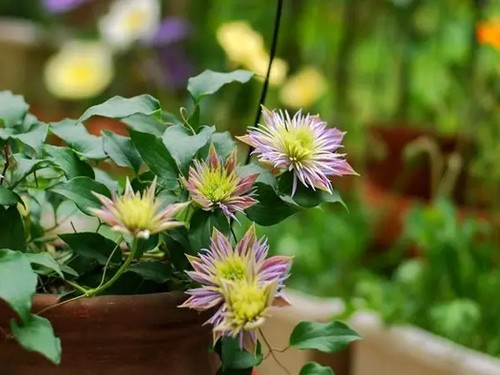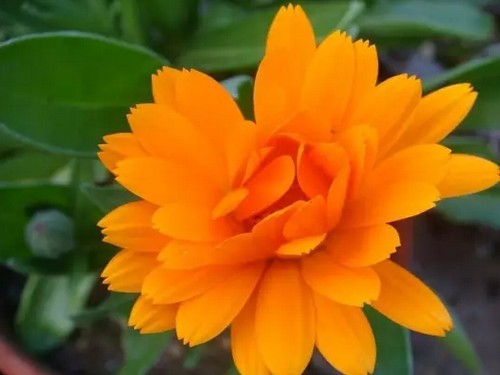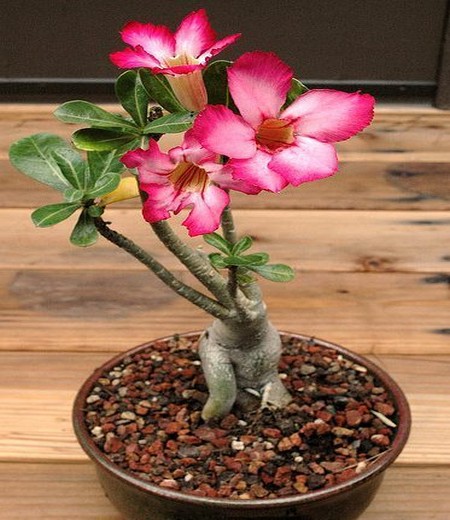Culture methods and matters needing attention of potted clematis
Many flower friends are impressed by the beauty of clematis, want to raise but do not know clematis easy to raise, if you have to give clematis planting evaluation of a planting difficulty, the editor thinks clematis planting difficulty is medium, because it does not want to hang orchid and the like so skin, but also is not the kind of very affectionate flowers, so if you want to raise clematis, flower friends can try.

Clematis is a very common ornamental plants, color varieties are more suitable for home decoration, can be planted in the courtyard, window, can also be potted planting for decoration. The following small series for everyone to share clematis breeding methods and precautions!
[Soil]
Like fertile, good drainage alkaline loam, avoid water or summer drought and can not retain water soil. Like fertile, good drainage alkaline loam, avoid ponding. The most important thing is that the pot soil must be breathable. If there are conditions, choose some better soil. If it is strictly disinfected, use perlite and peat for poor conditions. Try not to dig garden soil directly for potted plants.
[Watering]
Clematis growth is good to ensure that the root system breathing smoothly, requiring alternate watering wet and dry. To let the pot soil have dry time, generally 2-3 cm below the soil surface dry, you can water. If it is a plastic pot, it is another matter. According to the weight of the pot soil, it should be watered when it becomes lighter; if it is a pottery pot, observe the pot soil, and it needs watering when it is white. Water, must be watered thoroughly, the concept of watering thoroughly is that at least the bottom of the basin has water flowing out. Pay attention to timely ventilation after watering. Early tolerance is afraid of waterlogging. Due to high temperature and humidity in plum rain season, it is easy to suffer from disease and die. Therefore, it is necessary to keep the basin soil moist during the growing season. Avoid watering too much, otherwise the roots will rot easily.
[Light]
Potted clematis from autumn to early spring of the second year placed in full light cultivation, do not need shade, into the summer after strong light, will lead to clematis leaves aging withered, poor growth, need appropriate shade. In indoor maintenance, at least 4 hours of sunlight a day, or clematis will grow poorly.
[Fertilization]
The fertilizer requirements are not high, and liquid fertilizer can be applied once every half month or so in the peak growth period. Insist on thin fertilizer and diligent application, avoid quick success and instant benefit. Clematis varieties are numerous, some are not tolerant of fertilizer, such as long petals, evergreen, Montana, maintenance to less fertilizer. There is also seedling fertilization, it is best to only promote root slow seedling fertilizer, do not apply heavy fertilizer. Winter is the best season for Clematis fertilization, basically apply once, tube for several months!
[Notes]
1, just planted clematis a few months before the need to pay attention to sufficient water, so that the roots have enough water to extend.
2. Clematis is a vine, its branches are fragile and easy to break, so pay attention to lure and fix them in time.
3. Clematis cultured on the open-air balcony should pay attention to timely drainage, especially in the rainy season, and can be properly exposed to rain, but do not overdo it and move it indoors at appropriate time.
Time: 2019-06-01 Click:
- Prev

Culture methods and matters needing attention of potted Calendula
With short plants, dense flowers, bright colors and long flowering period, calendula is the most common herbaceous flower in early spring gardens and cities. Calendula is one of the common flowers and plants with bright colors, and it is not uncommon for potted plants to decorate homes.
- Next

Culture method of potted Desert Rose
Some flower friends asked how to breed desert roses. Generally speaking, desert roses are easy to raise in summer and can be watered outdoors once a week. It is difficult to keep them dormant in season. Here are some of the author's experiences in breeding desert roses in recent years. I hope it can give you a reference. 1. Propagation: cutting and striping are mainly used for propagation.
Related
- Fuxing push coffee new agricultural production and marketing class: lack of small-scale processing plants
- Jujube rice field leisure farm deep ploughing Yilan for five years to create a space for organic food and play
- Nongyu Farm-A trial of organic papaya for brave women with advanced technology
- Four points for attention in the prevention and control of diseases and insect pests of edible fungi
- How to add nutrient solution to Edible Fungi
- Is there any good way to control edible fungus mites?
- Open Inoculation Technology of Edible Fungi
- Is there any clever way to use fertilizer for edible fungus in winter?
- What agents are used to kill the pathogens of edible fungi in the mushroom shed?
- Rapid drying of Edible Fungi

